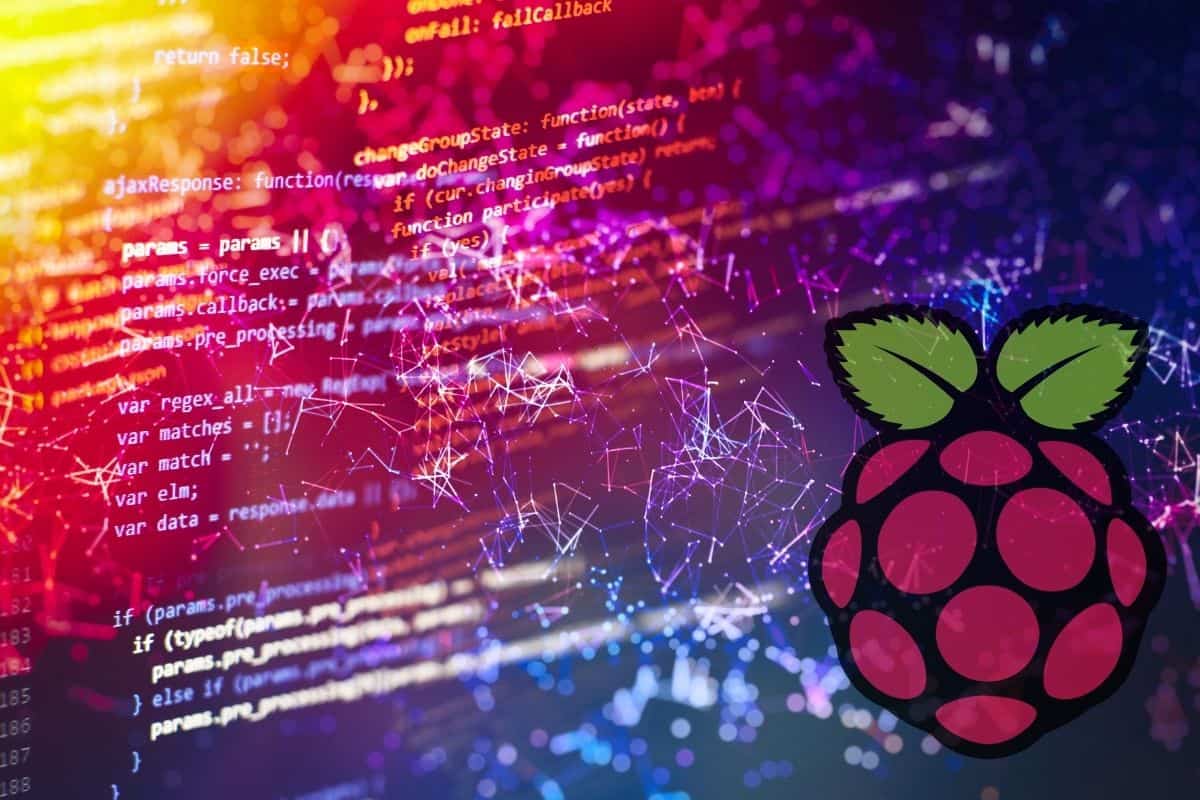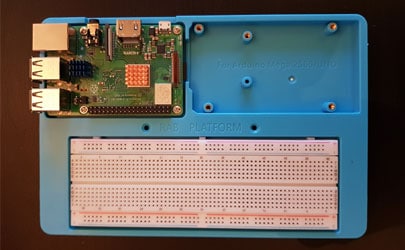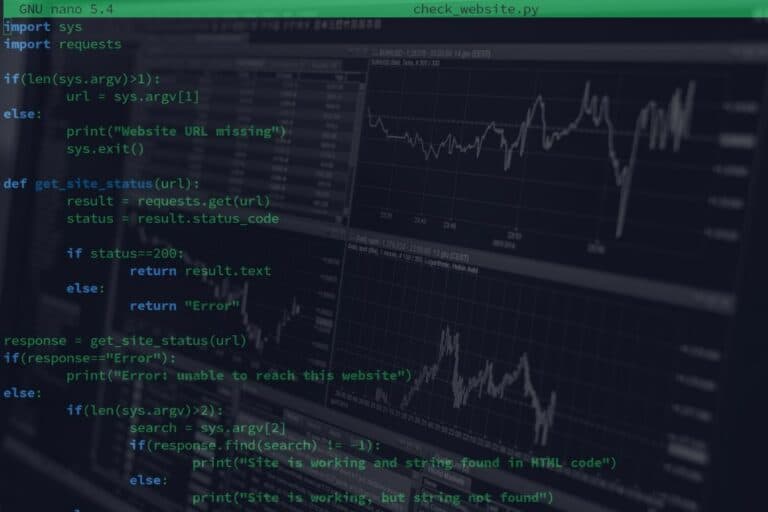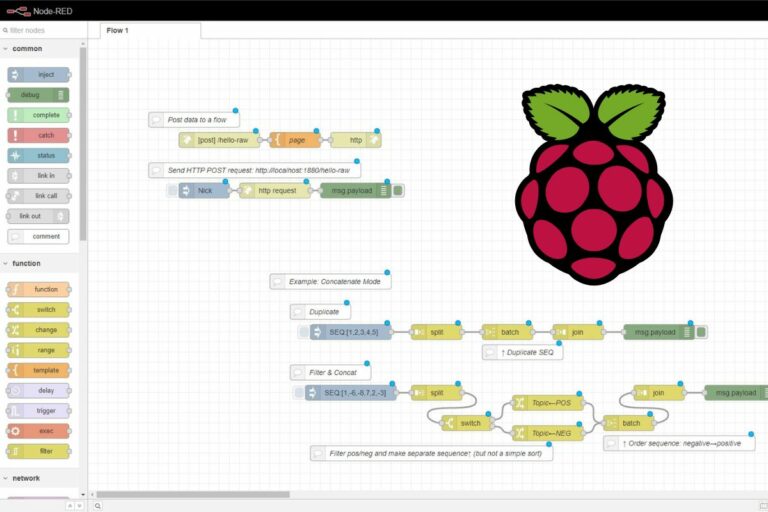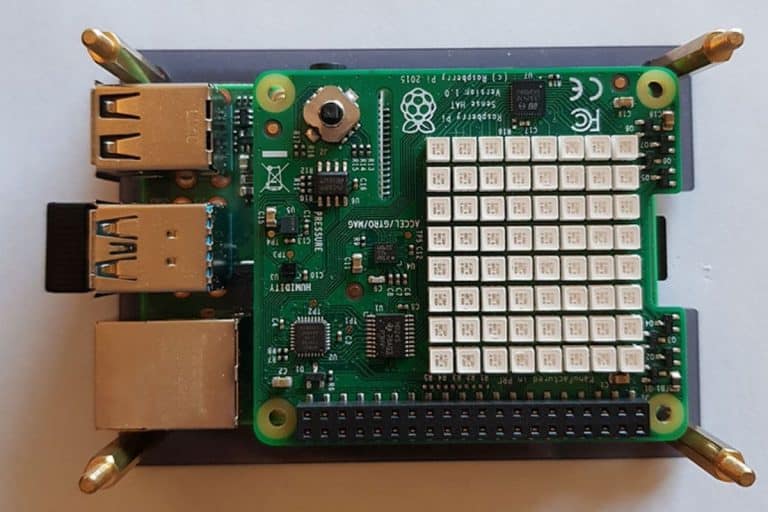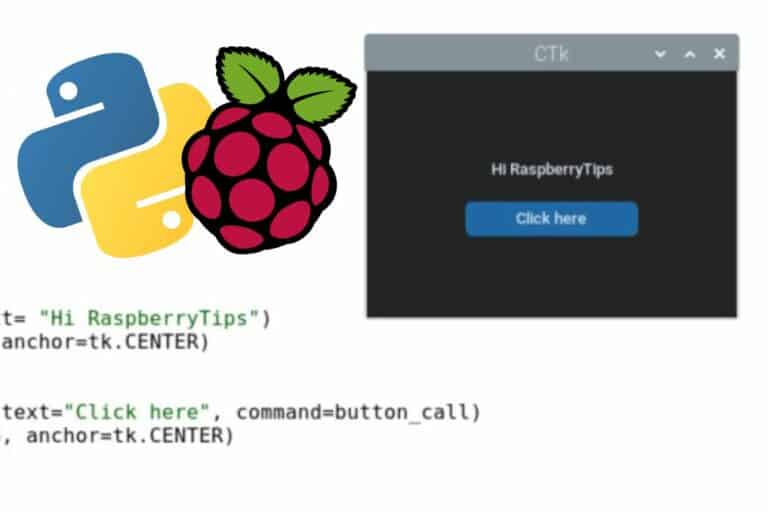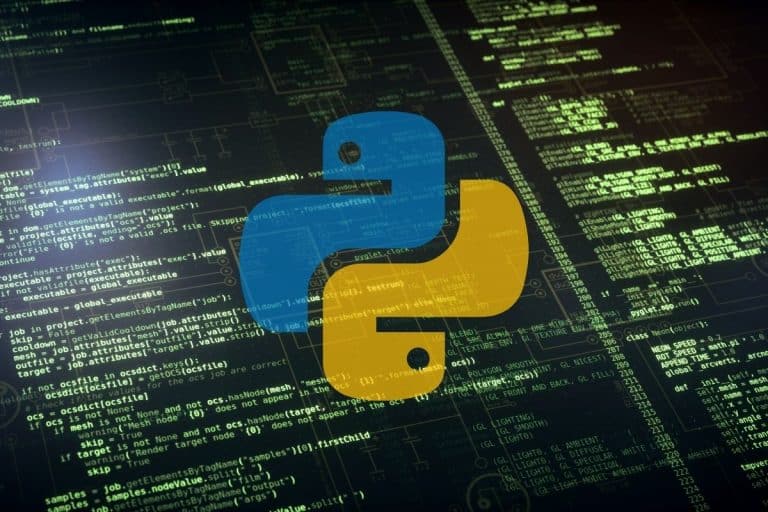Is Raspberry Pi Good For Programming? (Model, language, tips)
Raspberry Pi is a credit-card-sized computer that was created to teach people of all ages how to code. It also functions as a regular computer when paired with a keyboard, mouse, monitor, or other display. You might be asking yourself: is Raspberry Pi good for programming?
Raspberry Pi is an excellent device for programmers, and it is especially great when learning how to code. It has been created with this goal in mind and lets you experiment with Python, Java, and other languages. The default operating system includes all the applications to get started quickly.
So, my short answer is yes: the Raspberry Pi is good for programming. But let’s learn why, which languages you can use with it, which model to start with, and how you can get started.
By the way, if you get overwhelmed as soon as Python is required for a project, I recommend checking out my e-book “Master Python on Raspberry Pi“. It will guide you step-by-step to learn the essential concepts (and only the essential concepts) required to achieve any project in the future. Raspberry Pi without Python is like a car without an engine, you miss all the fun parts. Get 10% off by downloading it today!
Is Raspberry Pi a good way to learn programming?
The Raspberry Pi was created to solve a major problem with UK education: in the early 2000s, computers were too expensive for schools to buy. Eben Upton designed the Raspberry Pi to be ten times cheaper than standard computers, which allowed young people to learn how to code.
You can read more about the Raspberry Pi story by reading this other article from me. But that’s not the goal today. I just want to give you a brief introduction to the Raspberry Pi, so you can understand why it’s great to use to start programming.
What is a Raspberry Pi?
Overall, a Raspberry Pi is a tiny computer. It uses the same components: processor, memory, storage, etc. It’s just way smaller, and generally less powerful than a standard desktop computer. It’s also cheaper, as just explained.
I wrote a complete article introducing the Raspberry Pi, I highly recommend checking it first if you are new to this.
Due to its power limitations, a Raspberry Pi will generally run with a lighter operating system, based on Linux. Don’t worry, you can have a desktop interface, so it’ll be pretty easy to use, but you may need some time to get used to it, as systems like Microsoft Windows don’t work well on it for now.

The default operating system is Raspberry Pi OS (screenshot), and is perfect to learn how to code, as we’ll see in the following of this article. You can read more about Raspberry Pi OS in this other article, we’ll only focus on the programming part here.
If like me, you always mix the languages syntax, download my cheat sheet for Python here!
Download now
Why is the Raspberry Pi perfect to learn how to code?
The Raspberry Pi was invented with one goal in mind: to teach young students how to code. So, the hardware and software are designed for learning how to code. Code editors are included by default, the device is powerful enough and the device includes 40 GPIO pins to create your own electronic circuits.
When you use the desktop version of Raspberry Pi OS, you’ll get everything pre-installed for you:
- The operating system is developed by the same company that manufactures the Raspberry Pi. So, it’s perfectly compatible, supports all models, and runs well with any of them.
- The operating system includes several programming languages by default, especially Python and Scratch. And other languages can be easily installed, as we’ll see in the next section.
- It also includes several text editors (like Thonny and Geany). So, you can start to code directly after the installation.
- Other tools are also included to build more complex projects using extensions (like the Sense HAT) or AI.
Standard computers are not created for developers, or for those learning how to code. You will need several extra steps to learn how to program on a Windows laptop. The Raspberry Pi is really a great device to learn Linux and programming and is ready to use.
Related: Can a Raspberry Pi 5 Replace Your Main PC? I Tested It!
Join Our Community!
Connect, learn, and grow with other Raspberry Pi enthusiasts. Support RaspberryTips and enjoy an ad-free reading experience. Get exclusive monthly video tutorials and many other benefits.
Learn moreWhich programming language is best on Raspberry Pi?
As a general rule, Raspberry Pi is built to use Python by default. Python is a great programming language, especially for beginners as its syntax is close to natural English. Raspberry Pi OS also features Scratch, a visual programming language, which is particularly great for kids.
Raspberry Pi OS is a Linux system, and the most popular languages can be installed on it to learn with another language if you prefer. Here are a few options you can try.
Python
Python is one of the most used languages in the world. Not only it’s easy to learn, but it’s also really powerful.
Python is used by major companies, in a vast array of industries, especially for web development and artificial intelligence.

I remember learning how to code with Ada, a language that was easy to learn but that was not used in the real world. You won’t have this issue with Python. Once you master Python, you can use it for real projects or find a job as a Python programmer.
And learning how to code with Python is particularly easy with a Raspberry Pi, as everything is designed for this. Python is preinstalled on Raspberry Pi OS, the default code editors work well with it, and most tutorials on the Raspberry Pi official website feature Python.
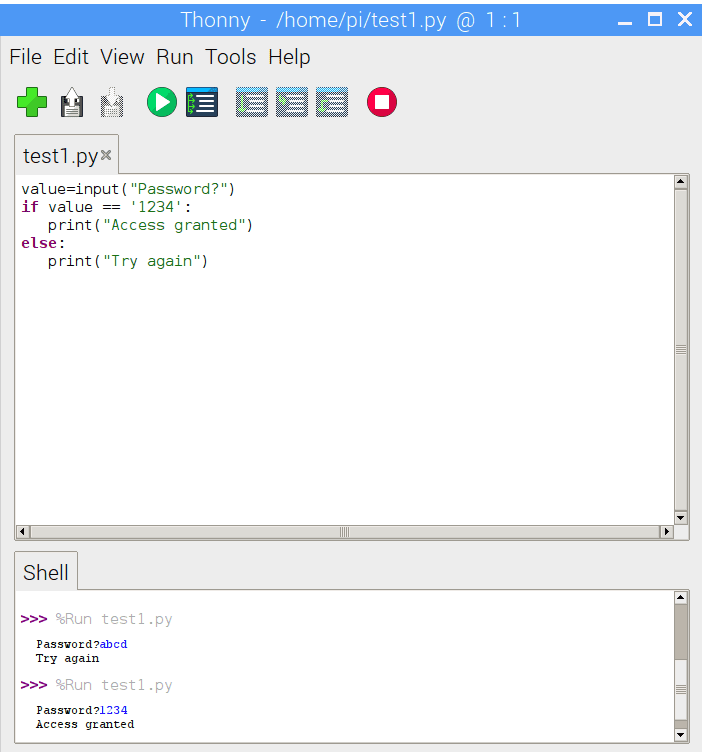
If you need additional guidance to get started with Python, you can read this beginner guide. And as I told you in the introduction, I also have a complete book to help you learn Python the right way. If you want quick progress, you can check all the details there.
Scratch
Scratch is a visual language, created for kids, but that also helps anyone to learn the logic of programming.

In short, you’ll use existing blocks (on the left side of the screen), and drag them into the center section, assembling them like a puzzle to create your script. You can then run the code and see what happens on the right side of the screen, where a fun character will execute the instructions.
Scratch is installed by default on Raspberry Pi OS and is ready to use on any Raspberry Pi model.
Additional extensions can be added for more features, like using the GPIO pins of your Raspberry Pi, for example.
If like me, you always mix the languages syntax, download my cheat sheet for Python here!
Download now
C / C++
C and C++ are like the next level when you are ready to try something new. I’m including them in this list to explain that there is no limit to which language you can use on Raspberry Pi.
Maybe you learned some basics of C/C++ at school? Well, you can install the packages for it on Raspberry Pi OS, use your favorite text editor to get back to it and try to write a few scripts with it.
I wouldn’t necessarily recommend starting with these languages, but they have some advantages for more experienced users (they tend to run faster than Python, for example), so I get it if some of you want to use them. At least, you know there is no limitation on Raspberry Pi.
I have a complete article on how to get started with C/C++ on Raspberry Pi if you want to give it a try.
Other languages
And obviously, if you prefer other languages (Java, Go, you name it), you can generally install them pretty quickly on Raspberry Pi OS. Raspberry Pi OS is based on Debian, and so almost any language can be installed on it.
You can also install a web server on your Raspberry Pi, so if web languages like HTML, PHP, or JavaScript are your thing, you can absolutely use a Raspberry Pi as your development playground.
It's a free PDF guide containing every Raspberry Pi Linux command you should know!
Download now
What Raspberry Pi model should you use to learn how to code?
All Raspberry Pi models are powerful enough to learn how to code, as they can all run Raspberry Pi OS. Using a more powerful device will be more comfortable, but it’s not mandatory to get started.
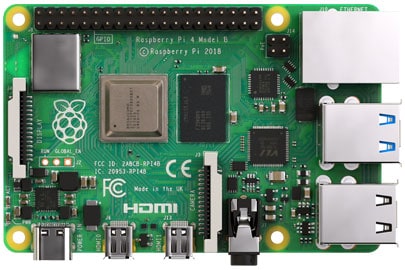
As a whole, I would recommend one of these models if you can get one to get started:
- A Raspberry Pi 4 or 400: This is currently the most powerful model. Using at least 4 GB of RAM ensures that the system runs smoothly, and the CPU is great for desktop usage.
You can get a starter kit on Amazon (currently a bit expensive and hard to find due to the global shortage), or buy all the accessories separately (check my resources pages for more details). - Raspberry Pi Zero 2: This is a good compromise between performance and price. It’s a bit short for desktop usage as there is only 512 MB of RAM, but the CPU is excellent. You can install a minimal version of Raspberry Pi OS, create the code from your computer (if you have one), and only use the Pi to run your scripts.
Getting one currently might be an adventure, but here is the direct link to Amazon, maybe you’ll get lucky and find one in stock :-).
To be clear, if you already have a Raspberry Pi, or can only find older models, it would be good enough to learn how to code. You don’t necessarily need the most powerful device to get started.
Just try to get these if you plan to work on larger projects, or use your device for other applications and desktop usage.
Warning: current prices are all over the place for a new Raspberry Pi. Make sure to check this article to pay the right price when buying a Raspberry Pi. I also give a few tips to find one in stock (which currently isn’t that easy).
It's a free PDF guide containing every Raspberry Pi Linux command you should know!
Download now
If you are looking for exclusive tutorials, I post a new course each month, available for premium members only. Join the community to get access to all of them right now!
How to start programming with a Raspberry Pi?
Before wrapping up this article, here are a few action steps to get started with programming on a Raspberry Pi.
Get a Raspberry Pi kit
The first step to getting started is to get a Raspberry Pi.
Even if you can learn to code on any computer, the Raspberry Pi is built for this, and you’ll save time by having your system dedicated to this goal.
I gave you a few links in the previous section, so you can either find a kit with everything in it (like this one) or buy the mainboard and the accessories individually (SD card, power supply, etc.).
If you are on a budget (and not in a hurry), avoid Amazon and try to get your hardware from the official resellers. Prices are generally much more affordable, but they are often out of stock (tip: the Raspberry Pi 400 is generally easier to get than the other ones).
Install Raspberry Pi OS
After receiving your Raspberry Pi and its accessories, you can install Raspberry Pi OS on it.
I would start by using Raspberry Pi OS with Desktop, as it comes with a graphic interface and the main tools you’ll need to get started.
You can read my tutorial here on how to install Raspberry Pi OS.
If you are interested in Python or Scratch, there is nothing else to do, you can start directly with the built-in applications. Follow my Python tutorial, read my book, or find help on other websites or YouTube if you prefer, it doesn’t matter as long as you find what works best for you.
Start with one language and text editor
I told you that Raspberry Pi OS is preinstalled with some code editors, like Thonny and Geany.
These are great, but you can easily install other ones if you like.
I know that each developer has their favorite. If you do, you don’t necessarily need to change.
Popular editors like Visual Studio Code, Eclipse, PyCharm, and many others can be installed on Raspberry Pi OS.
You’ll find my favorite text editors in this article, with the instructions to install them on your device.
Once your choice is made, I recommend staying with the same language and text editor until you master them. Learning how to code from scratch is already a challenge, don’t mess up by mixing languages or switching the text editor every day. Take some time to make your decision, and stick with it.
Follow my step-by-step process to learn Python
And if you need a hand to get started with Python, I have exactly what you need.
I was a web developer for years, but I had only 3 hours of PHP lab at school. I learned Linux and PHP on my own, and I can teach you how to do the same thing with Python. But the fast way, not the boring stuff.
It’s a bit like learning how to play piano or any other instrument: Do you really want to spend 10 years learning music theory before playing the first song, or do you prefer the short version and learn the minimum to have fun with it in a few weeks?
Follow the step-by-step process I created for you, and quickly learn Python without losing time understanding the useless concepts. Check this page to download the e-book now.
Whenever you’re ready, here are other ways I can help you:
The RaspberryTips Community: If you want to hang out with me and other Raspberry Pi fans, you can join the community. I share exclusive tutorials and behind-the-scenes content there. Premium members can also visit the website without ads.
Master your Raspberry Pi in 30 days: If you are looking for the best tips to become an expert on Raspberry Pi, this book is for you. Learn useful Linux skills and practice multiple projects with step-by-step guides.
The Raspberry Pi Bootcamp: Understand everything about the Raspberry Pi, stop searching for help all the time, and finally enjoy completing your projects.
Master Python on Raspberry Pi: Create, understand, and improve any Python script for your Raspberry Pi. Learn the essentials step-by-step without losing time understanding useless concepts.
You can also find all my recommendations for tools and hardware on this page.

